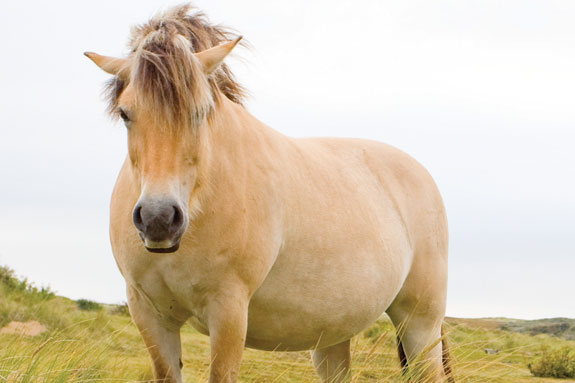If a horse’s tail is:
High tailing: Dock is held very erect with the tail hairs flowing away from the horse. Often a sign of some type of excitement.
Hook tail: Mild form of high tailing. Sign of mild interest and commonly seen in horses which are meeting one another. Mares in estrus often show the hook tail.
Flat tail: Tail simply hangs loosely down behind the hindquarters. Sign of relaxation or a horse with some type of problem.
Clamped-down tail: Tail is held in and close to the hind legs. The horse is unhappy, may be fearful or frightened of something or someone.
Tail lashing: Frequent movement of the tail indicates the horse is being annoyed or irritated.
If a horse’s legs are:
Pawing: Used to investigate things, breaking ice, sign of frustration
One front-leg lifted: Can be a mild threat (or a normal stance sometimes when eating)
A back-leg lifted: Is often a more defensive threat. Often seen around the feed or feeder.
Stamping: Indicates a mild threat or protest (or they may be getting rid of insects or flies biting their legs).

Some horses’ facial expressions include:
Snapping: This is seen in foals showing submission to an older horse. They droop their ears, stretch the neck, retract or pull back lips and repeatedly open and close the mouth in very quick succession with the teeth exposed.
The Flehmen response: This is caused by an intense or unusual smell, usually in stallions when they sense a mare in heat. They stick their nose in the air and curl the upper lip over their nose.
Flared nostrils with lips held together: Usually means they are excited, alert or fearful of something.

Showing white around the eyes: Usually means they are angry or scared. (White around the eyes is also a normal characteristic of the Appaloosa breed.)
Nose wrinkling: Back margin of a nostril is flared or raised backwards so a wrinkle appears behind it. The horse is annoyed with something. When this is combined with ears laid back, the horse is threatening someone or something.
Saggy mouth: Bottom lip appears to just hang down. Indicates relaxed, sleepy horse.
Airplane ears: The ears flop out laterally with openings facing down; usually meaning the horse is tired and relaxed.
Neutral: Is when the ears are held loosely upward, openings facing forward or outward.
Pricked: Ears held stiff with openings pointed directly forward means the horse is alert or focusing in front.

Ears angled backward (with openings directed back towards a rider): Usually mean attentiveness to the rider or listening to commands.
Drooped ears: Hang down loosely to the side, usually meaning tiredness or pain.
Ears pinned back should alert the handler or rider that the horse might be angry or irritated and about to act in an aggressive manner.
One ear back and one forward indicates the horse is listening to sounds behind him and in front of him. ![]()
—Excerpts from Iowa State University’s Horse Grazing newsletter.
PHOTOS:
Some examples of horses’ facial expressions are airplane ears (TOP), ears angled backward (MIDDLE) and/or ears pricked (BOTTOM). Photo courtesy of Thinkstock.










